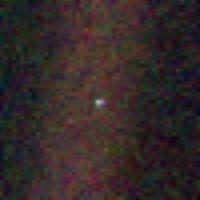One of the things I had to decide when I started this blog was how I was going to treat the word earth. Should I use earth or Earth? Do I need to use the word the?
It may seem that I’m taking the geek part of the title Science Word Geek far too seriously here, but if you’ll bear with me, I think I can explain how the most minute of minutiae can sometimes point to a shift in worldview.
Earth is the proper name of our planet. So of course you would simply say Earth, the way you say Jupiter or Saturn. But wait a minute, we don’t usually say just Moon or Sun: “the astronauts landed on Moon”? Nah, it should be the moon. In a nonscientific context, earth alone, lowercase, makes sense, for example, in the phrase down to earth. But there are lots of times where I might feel more comfortable using Earth, say to compare the topography of Earth and Mars. I think that will probably be the most common case on this blog, so I decided to use Earth.

I think the reason that the moon seems so natural and the earth doesn’t always seem quite right may be that I grew up knowing there were multiple moons in the solar system, so to me they seem inherently generic. Our moon is obviously one of many, and to me, it always has been. I think there’s no reason to believe we won’t someday find Earthlike planets around other stars, but until we do, Earth is singular and unique in a way the moon and sun are not. We have discovered super-Earths, but not earths. We’ve also found Jupiter-like and Neptune-like planets around other stars, but I think most people still capitalize Jupiter and Neptune in those cases. We even have subtypes: hot Jupiters, eccentric Jupiters (their orbits, not their personalities), and hot Neptunes, but I’ve seen hot jupiter rarely if at all (and I just now had to argue with autocorrect in order to use a lowercase j).
It seems to me we’re going through an interesting transition in how we view our universe, and we’ve been through this kind of shift before. For example, Oceanus was the name of the ocean believed to encircle the known world in ancient times, when a great deal less of the world was known. Now we don’t even think twice about the fact that there are multiple oceans on Earth, and we speak casually of methane oceans on Titan or a subsurface ocean on Europa.
Something similar had to have happened with the sun as we recognized that it was one star among many, and with the moon as we learned that other planets had moons, starting with Galileo’s telescopic observations of the four largest moons of Jupiter. More recently, in the twentieth century, Edwin Hubble resolved a lively debate about whether spiral nebulae were part of the Milky Way or were “island universes,” or as we would put it now, separate galaxies in their own right.
Hubble used images taken by the Hooker 100-inch telescope, which was able to resolve individual stars in the Andromeda Nebula, and applied a newly discovered relationship between the period of a certain type of variable star (how long it took to go from bright to dim and back again) and its intrinsic brightness. If you know the inherent brightness of a star and its brightness as viewed from Earth, you can calculate its distance. Hubble found that the Andromeda Nebula was in fact the Andromeda Galaxy, around 2,000,000 light years away, and far too distant to be part of the Milky Way. So the singular term Galaxy, which came from a Greek root meaning milk, became lowercase when it expanded to cover all of the other galaxies. Scientific papers still distinguish between Galaxy (our own) and galaxy (one of the others).
I’m delighted to be living in a time when we can see the same shift happening with regard to planets. There are enough known exoplanets that we can begin to classify them according to type of planet and even type of solar system. My iPad chirps at me every time a new exoplanet is added to the database—what a heady experience! It’s well worth the occasional editorial perplexity.
Learn more:
- Article from the Solar Center at Stanford about the people who were instrumental in figuring out that the sun is a star
- Astronomy Photo of the Day’s web page about the 1920 Shapley-Curtis debate about the nature of the galaxies and how the question was resolved
- I use the Exoplanet App, which is based on the Open Exoplanet Catalogue. The Exoplanet App appears to be available only for the iPad, iPod Touch, and iPhone. There are several exoplanet apps for Android, and I don’t know anything about any of them, so I will not comment.
- A New York Philharmonic broadcast in 1945 included an intermission feature in which Edwin Hubble gave a ten-minute talk about the state of astronomical knowledge at the time.